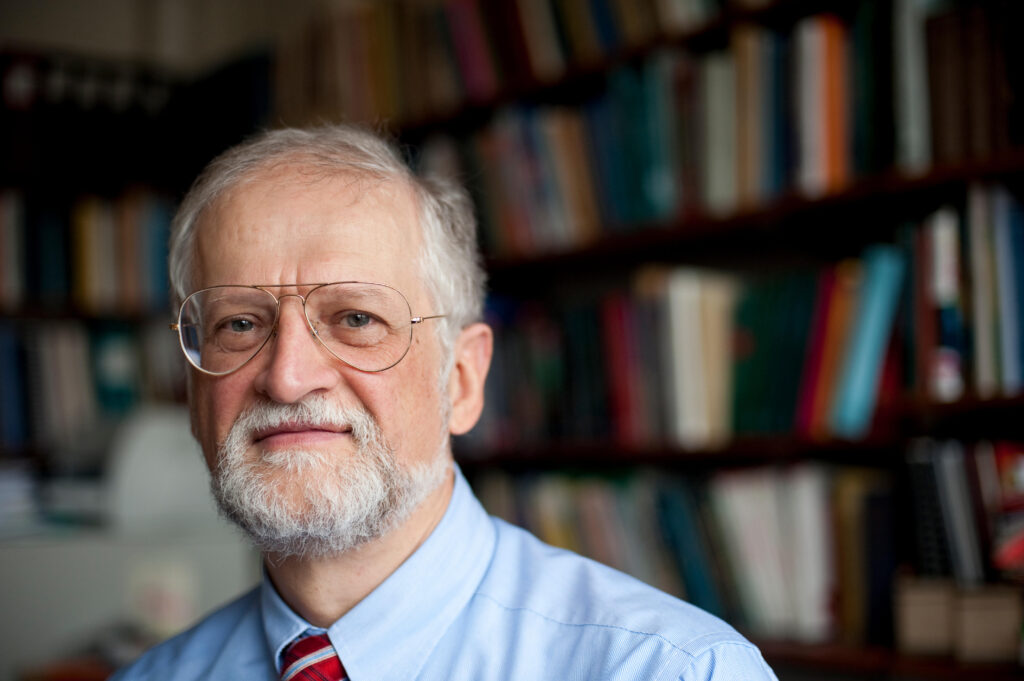Local archaeologists are working to understand history

According to Bill Middleton, an associate professor of archaeology at Rochester Institute of Technology, there are many misconceptions about the work of archaeologists.
No, he’s not unearthing dinosaurs— that would be paleontology. He is not looking for buried treasure, and he doesn’t keep the artifacts he’s found.
The truth involves more dirt, sweat, and person-hours, followed by immeasurable rewards. “Field work—whether excavating, doing surveys, collecting soil and plant samples—is very physical and demanding. It often is in isolated areas that are far from the comforts of modern life,” says Middleton. “If you can adapt to a certain degree of physical and cultural discomfort, it is a truly amazing experience.”
One of his specializations is in archaeometry, which applies physical science analytical techniques to archaeological research. Middleton has analyzed manmade residues on the floors of ancient houses to understand what types of activities took place there. He has also studied plant and animal remains to understand ancient diet and much more.
His current research focuses on landscape change in the Mexican state of Oaxaca by the Zapotecs, who had the first state-level society in ancient Mesoamerica and still live there today. The research is focusing on the impacts the Zapotecs had on their environment between 10,000 BCE and 1,500 CE. According to Middleton, some of the impacts were so great, they had to alter their way of life to adapt to the changes they had caused.
“My part in the project is to use hyperspectral satellite imagery to characterize the present environment and [plant microfossils] to reconstruct past environments so we can model the process of environmental change,” says the associate professor, whose students assist him in this work. The technology he’s using has changed greatly throughout the archaeologist’s career. Decades ago, Middleton used to create a map by taking vertical and horizontal angles, measuring differences in altitude, and using a tape measure to measure distances. He then spent a lot of time in the lab converting all his measurements into a usable map. Today, he uses a laser theodolite, which automates nearly everything, or a GPS mapping tool to create maps.


The RIT associate professor’s research has been focused in Oaxaca since 1990, and he met his wife Elia, a Zapotec, on a flight to the US from the Mexican state.
Ensuring the community’s voices are being heard is imperative when working on sites of great cultural importance, he says. Middleton has spent up to two years of his time consulting with members of a community while working on a project. On one project in a mountain region in Oaxaca, the residents insisted he not remove any artifacts from the town.
“Government regulations require that artifacts be stored in government facilities, but I was able to get permission from the government to store them in the community’s museum,” says the archaeologist.
The best of both worlds
In addition to spending considerable amounts of time collaborating with the communities they’re working in, professionals working on ancient sites are often collaborating with an interdisciplinary team to ensure a holistic approach.
“You need to connect in very different directions in order to really understand what is happening,” says University of Rochester (UR) professor Renato Perucchio. “This is something that one learns very quickly: you need to be humble in this type of work. . . . You need to be able to absorb knowledge from very different fields and recognize that, in many cases, there are more questions than answers.”
Perucchio is a structural engineer whose research is focused on ancient monuments and how they resist earthquakes. He’s also a professor and chair of mechanical engineering, a professor of biomedical engineering, and the program director of the archaeology, technology, and historical structures program at UR.
He’s currently researching Huaca de la Luna—or Temple of the Moon—a vast pyramid built alongside a volcanic mountain in Peru, as well as the Mayan temple of Bonampak in Chiapas, Mexico. In his work, Perucchio is using computational modeling to model the structures’ response in the event of an earthquake. He’s studying the way the structures were built, the way they have been damaged by natural causes and looters, and more to understand how they would survive seismic activity.

While the history of the sites he’s working on can be fascinating, it can also be haunting. The site in Peru, for example, was once a place of human sacrifice. And Elmina Castle in Ghana, where he brought students to study a few years ago, was “one of the principal slave depots in the transatlantic slave trade for more than three centuries,” according to CNN.com.
“In Elmina Castle, it was this puzzling experience of being in a European castle and, at the same time, in a place where incredible misery was inflicted on people. These are really moments in which you need to stop and think,” says Perucchio. “I’ve had the great fortune of working in incredibly important places in which the history is a combination of richness and immense pain and suffering. Inevitably when you work there, you absorb all this.”
Luckily, the work is also incredibly fulfilling, and the UR professor understands the long-term significance of it. He’s found “the best of both worlds” in a career that integrates the humanities with his engineering training. And his research is helping toward conserving, understanding, and preserving the past.
Views: 12




